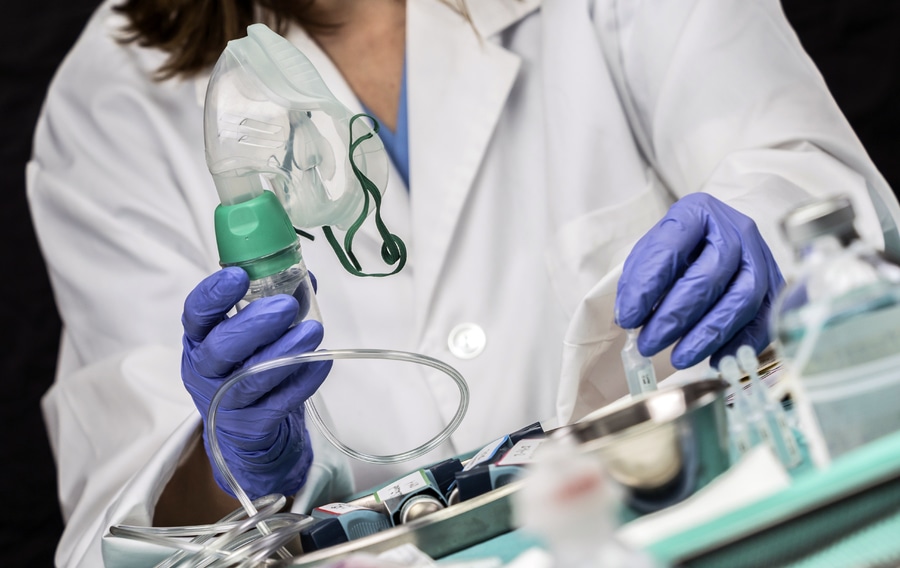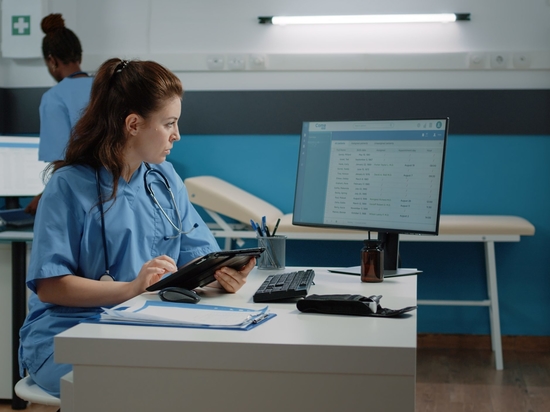
#Industry News
Everything You Need to Know Before Buying an Anesthesia Cart
Three things to know
It’s not surprising the healthcare industry requires a lot of specialized equipment. Many of the tasks performed, like surgery, are unique.
That’s why medical computers are used instead of off-the-shelf brands. Features like medical grade and fanless ensure they can handle routine demands in medical clinics and hospitals.
Medical carts are another example of specialized equipment. They play vital roles in the health field. For example, your Surgical Department relies on a specific one – an anesthesia cart – to make each operation a success.
Are you tasked to purchase one or more for your department? We provide some guidance today in your decision-making, namely:
How items will be organized in.
Being battery-powered.
What features to keep the contents secure.
What Is a Procedure Cart?
Anesthesia carts are part of a group of specialized medical carts called procedural mobile medical carts. As the name suggests, anesthesia carts are used by medical staff in the performance of a specific procedure, namely surgery in the operating room.
When shopping for an anesthesia cart, consider the following three factors:
Organization
Power
Security
What is in an Anesthesia Cart and How to Organize It
Unsurprisingly, anesthesia carts provide anesthesia supplies ranging from medications to the equipment used to administer them, e.g., syringes.
A spare self-inflating bag, endotracheal tubes, laryngeal mask airways (LMAs), suction catheters, IV supplies, laryngoscope handles and blades, and a variety of meds are just a small sampling of items found in many anesthesia carts.
Space is valuable on an anesthesia cart; only the most relevant items should be stored there. So, don’t store a pediatric oxygen mask when the cart is for geriatric surgical use.
The carts need to be fully stocked before every operation or procedure. That means it’s vital that your cart has the right amount of space available.
So start with the drawers. A cart primarily used to hold pill bottles and the like will be quite different than that used to store dressings.
Now, look to customize and adapt your medical cart to meet your hospital’s or healthcare facility’s specific needs. This can be done by looking into additional subdivided trays, dividers, shelves, clear tilt bins, and a worktop surface.
Label things so everyone knows what’s in what tray or shelf and where it is. A disorganized cart could potentially put patients at risk. Think if the provider can’t find the right equipment or medication as the patient begins to Code Blue, for instance.
Also, consider how the medical staff accesses everything in the cart. How easy are certain medications to get? Are the correct pressure cuffs within easy reach? The most commonly used items should always be within reach in an anesthesia cart. For example, don’t stick commonly used meds at the back of the bottom drawer.
Advantages of Anesthesia Carts with Battery Power
In today’s hospitals, workstations on wheels, general medical carts, and procedural mobile medical carts are used to power peripherals like medical computers, keyboards, and the mouse.
Consider adding portable batteries to your anesthesia cart. Many manufacturers can customize their carts, so battery packs occupy minimal space.
For anesthesia carts used in the OR, it is easy to access patients’ EMR information and the anesthesia record without compromising.
How Workspace Maximizer Anesthesia Cart Efficiency
While medical computers and tablets have reduced the need for flat surfaces, they are still necessary. Nurses, for example, may need to prep and administer anesthesia effectively to a patient. A flat surface makes the preparation much easier and safer.
So consider an anesthesia cart with shelves on the side that can be pulled out. This provides an extra workspace to work with.
Another example is side pods that swing out for added workspace. Both systems can be repositioned back with shelves that are reusable for storage.
Another way to maximize the chart’s efficiency is to add an overbridge. This pole or frame allows you to hang items instead of laying them out flat on a surface. This makes them all within easy reach on the anesthesia cart. Hook up extra shelves, tilt-out bins, and accessory rails to hold items like tape and glove boxes.
Securing Anesthesia Cart Security Through RFID, Touchpad
Many controlled substances are typically stored in anesthesia carts. Schedule II, III, IV, and V drugs are examples of such drugs.
When choosing a chart, look at those that offer card access and a touchpad-operated security system that uses pin codes. The latter requires an electronic keypad to enter numeric codes or sequences.
RFID cards can also provide security. When the provider or other medical staff member, like a nurse, needs access to the cart’s contents, they present their card to the built-in reader. The system verifies their identity and permissions via a security program like Imprivata. The drawer or other appropriate container opens if the card-holder can access it.
There are several advantages to this system. A record of the card-holder, the drug or drugs taken, and a time-stamp are all recorded in the cart’s medical box PC or similar system. This makes it easier to update the cart’s settings. Audits are also easier to perform, essential when tracking employees for possible drug diversion.
Note many anesthesia carts require both RFID and touchpad as primary and secondary credentials. This helps minimize the risks of unauthorized access to the cart’s contents.
Other security features to consider:
Wi-fi capable
Keyless access with auto-relock
Programmable timers
Closing Thoughts
An anesthesia cart is a form of medical cart, and it’s an essential part of healthcare, especially in the OR. Organization, power options like batteries, and security are three factors to consider when selecting the right cart.
Contact an expert at Cybernet if you’re looking for the right mix of features for your healthcare facilities’ anesthesia carts, including usage with medical computers.








